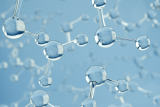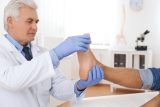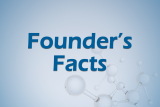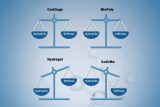Founder’s Facts: BioPoly and Cartilage – Benefits of a New Biomaterial – Part 2
Founder's Facts
November 15, 2024
Hear what BioPoly Founder, Herb Schwartz has to say about the properties of BioPoly and Cartilage in Part 2:
Cartilage is a biological tissue composed of an extracellular matrix (ECM), water, and cartilage cells (i.e. chondrocytes). The ECM primarily consists of collagen fibers (Type II for hyaline cartilage) and proteoglycans. Cartilage is void of nerves and blood vessels; so, although the chondrocytes participate in turnover of the ECM, the healing propensity of cartilage is very limited. So, when an injury occurs or if the underlying bone has issues, the unfortunate result is often a cartilage lesion that never heals. These lesions disrupt the biomechanics of the joint, causing focal areas of high stress in the remaining cartilage such that the lesions grow larger and larger over time and that become quite painful.
So, how does BioPoly® address this issue? BioPoly is a microcomposite material made from polyethylene (UHMWPE) and hyaluronic acid. This complex-sounding material is, in simpler terms, a “self-lubricated” plastic or synthetic cartilage. By replacing the damaged cartilage and a small amount of the underlying bone with a BioPoly implant, the biomechanics of the joint can be restored and pain from exposed bone can be reduced or eliminated. There are other factors at play, however, than just altered biomechanics in these diseased joints. The tissue in these joints is often inflamed, resulting in a chronic state of joint degeneration. In preparing the defect site to accommodate a BioPoly implant, much of the source of inflammation is removed (i.e. damaged tissue, inflammatory cells, etc.), thus, allowing the entire joint to calm such that overall joint health can also be restored.
So, removing the diseased tissue when implanting BioPoly® is important to clinical success; however, equally important is replacing the tissue with the right material. At present, metal is used often because it can be polished to a mirror finish; however, metal is a stiff, hydrophobic material that repels the lubricating synovial fluid, and ultimately wears away the opposing cartilage surface. BioPoly, on the other hand, is a hydrophilic polymer uses the synovial fluid for lubrication during articulation. The polymer backbone of BioPoly is significantly less stiff than metal as well. So, the end result is that BioPoly is a “cartilage-friendly” material, much more so than CoCrMo.
BioPoly® implants have been reducing pain and restoring joint motion in Europe since 2012 and are gaining market traction in the USA with our FDA-cleared products: BioPoly® Great Toe, BioPoly® Lesser Toe, BioPoly® Radial Head.
Stay tuned for updates as BioPoly continues advancing joint care and transforming lives!



